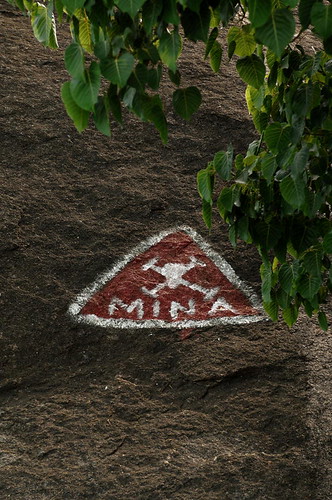Landmines in Angola Africa, there are no safe steps, the Sarajevo of Africa, Angola Bie Province landmines
Kuito, a city located in the Bie Province of Angola, has been heavily affected by landmines due to the country's long history of armed conflict, particularly the Angolan Civil War that lasted from 1975 to 2002. Landmines pose a significant threat to the local population and have severe consequences for people living in and around Kuito.
Kuito is the distressed but slowly restoring capital of Bie Province. Bié is a province of Angola located on the Bié Plateau in the central part of Angola. Parts of Angola are contaminated with landmines as a result of four decades of almost continuous warfare, making it the most mine-affected country in sub-Saharan Africa and one of the most mined countries in the world. An anti-personnel weapon is one primarily used to inflict death or cause major bodily injury to people. Anti-personnel landmines are explosive devices designed to explode when a person gets near the device or steps on the device.
During the Angolan Civil War, landmines were widely used as a military strategy by various factions involved in the conflict. Both government forces and rebel groups laid extensive minefields in and around Kuito and other areas of the country to impede the movement of enemy forces.
Angola Bie Province landmines
Kuito is still surrounded by rings of landmines. Situated in central Angola, Kuito used
to be called Silva Porto, taking its name from Francisco Ferreira da Silva, who
was Bie's colonial commander in chief and came from the northern Portuguese
city of Porto.
Francisco Ferreira da Silva founded Kuito in 1845. Kuito, the
capital of Bie, is a city destroyed by war. Known as the "Sarajevo of
Africa", Kuito has been reduced to rubble after being besieged by the
National Union for the Total Independence of Angola (UNITA) rebels for almost
20 years. UNITA was led by Jonas Savimbi and was supported by the country’s
largest ethnic group, the Ovimbundu. The Ovimbundu, also known as the Umbundu
people inhabit the Bié Plateau in Angola.
 |
| Landmine photo by DFAT photo library |
The late Diana Princess of Wales visited the Angolan province of Bie in 1997 in
support of the Halo Trust, not long before her death in a car crash in Paris.
Pictures of Diana wearing protective gear as she observed mine-clearing efforts
by Halo in the towns of Huambo and Kuito helped draw the world's attention to
the horrific ordeals of amputees and the suffering caused by landmines.
Parts of Angola are contaminated with mines as a result of four decades of almost
continuous warfare, making it the most mine-affected country in sub-Saharan
Africa and one of the most mined countries in the world. Some mines were put
into place to discourage people from searching for food holding them captive and
at the mercy of insurgents. Human rights groups have long alleged abuses
against Angolan civilians.
Angola is one
of Africa's leading oil producers, but most rural citizens still live on less
than $1 a day making agriculture a vital need in order to survive. However, the
presence of landmines creates a situation where rural citizens are dependent on
food transported into the area.
The
Republic of Angola signed the Mine Ban Treaty on December 4, 1997 however,
since 1994 Halo has removed and destroyed 21,300 anti personnel and anti tank
mines so far with its efforts steadily moving out from the town center to areas
farther afield. Anti-personnel landmines are explosive devices designed to
explode when a person gets near the device or steps on the device.
Angola's
lingering civil war, which broke out after it gained independence from Portugal officially ended in 2002. The Alvor Agreement signed on January 15,
1975, granted Angola independence from Portugal on November 11, 1975. Angola 27-year civil war killed and injured
well over one million people.
To date, Kuito is still heavily contaminated with landmines and unexploded ordnance, which are remnants of war, such as bombs, grenades, and other explosives that did not detonate when deployed. These UXOs remain a serious threat to the local population, even long after the cessation of hostilities.
Kuito Landmines three facts
The late Diana Princess of Wales visited the Angolan province of Bie in 1997 in support of the Halo Trust.
Parts of Angola are contaminated with mines as a result of four decades of almost continuous warfare, making it the most mine-affected country in sub-Saharan Africa and one of the most mined countries in the world.
According to the HALO Trust, there are more than 620 minefields mapped and recorded in the eight provinces they currently operate in; Benguela, Bié, Cunene, Huambo, Huila, Kuando Kubango, Kuanza Sul and Namibe.









